Maharashtra
Maharashtra
Ajanta Caves
Ajanta attained a very important tourist destination in the world. The caves, famous for its murals, are the finest surviving examples of Indian art, particularly painting. The caves were excavated in different periods (circa. 2nd century B.C. to 6th century A.D.) In all, total 30 excavations were hewn out of rock which also include an unfinished one. Out of these, five (cave no. 9, 10, 19, 26, and 29) are chaityagrihas and the rest are viharas.
famous for its murals, are the finest surviving examples of Indian art, particularly painting. The caves were excavated in different periods (circa. 2nd century B.C. to 6th century A.D.) In all, total 30 excavations were hewn out of rock which also include an unfinished one. Out of these, five (cave no. 9, 10, 19, 26, and 29) are chaityagrihas and the rest are viharas.
After Sikandar Lodi who died in 1517, his son Ibrahim Lodi held the fort for 9 years until he was defeated and killed in the battle of Panipat in 1526. Several palaces, wells and a mosque were built in the fort during the Lodi period.
Aurangabad Caves
The groups of Aurangabad caves are twelve rock cut Buddhist caves situated on sinhachal hills running roughly east to west. These caves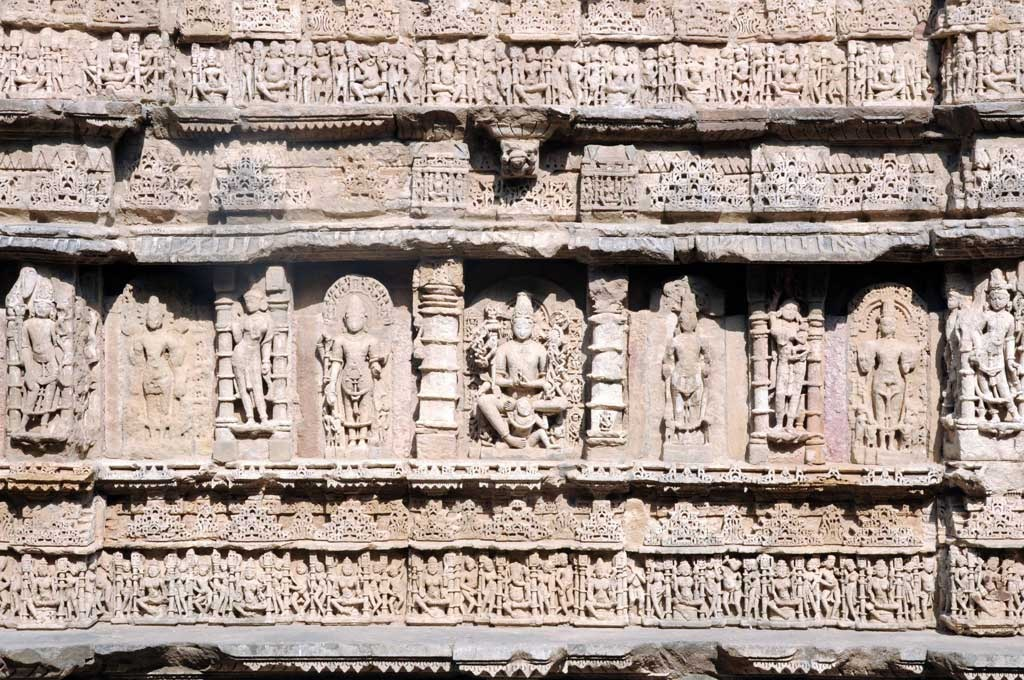 are in three groups separated by each other by a distance of nearly a kilometer. All caves belong to the Buddhist faith. The third group is left unfinished and moreover appears like natural caves and inaccessible. Among first group Cave 1 is (6th century AD) and Cave 2 were monasteries dedicated to Mahayana Buddhism. Cave 3, consists of a pillared verandah with a chamber at each end, a hypostyle hall with two cells and one pillared chapel at each side, a pillared antechamber leading to a sanctum at the back. Cave 4 is a Hinayana chaityagriha datable to circa 3rd century AD. It has a rectangular hall with an apsidal arrangement of pillars (broken) dividing into nave and side aisles. The high cylindrical drum and bulbous dome are placed at the rear side of the hall. Cave 5 is a small monastery of Mahayana faith datable to 5th century AD. In Group 2, Cave 6 has combined characteristics of a monastery and a temple (7th -8th AD.) belonging to Vajrayana faith. The pillared verandah (broken) consists of a sanctum with its antechamber in the centre, surrounded by a passage with cells on each side and two in the back. The Buddha image in the square sanctum housing is in preaching attitude with kneeling devotees. Cave 6 (a) is small cave, comprising few later sculptures in the form of Ganesha is flanked by the goddess Kali, Durga, Saptamatrika with Virabhadra. On the Eastern wall the figures of Lord Buddha are carved in bold relief. Cave 7 consists of a pillared verandah flanked by pillared chapel, square sanctum in the center, surrounding by a circumambulatory passage with three cells in each side and two in the back. The entrance door of the verandah has Avalokiteshvara as savior. Inside of the sanctum on the Western wall is a beautiful composition of a dancing female in the midst of seated female musicians playing different musical instruments. Cave 8 was intended to be a double storey monastery but unfinished in the upper floor. Cave 9 contains two excavations, which are marked as 9 and 9a both of which are incomplete. On the Western wall of the verandah, Buddha is carved in Mahaparinirvan-mudra.
are in three groups separated by each other by a distance of nearly a kilometer. All caves belong to the Buddhist faith. The third group is left unfinished and moreover appears like natural caves and inaccessible. Among first group Cave 1 is (6th century AD) and Cave 2 were monasteries dedicated to Mahayana Buddhism. Cave 3, consists of a pillared verandah with a chamber at each end, a hypostyle hall with two cells and one pillared chapel at each side, a pillared antechamber leading to a sanctum at the back. Cave 4 is a Hinayana chaityagriha datable to circa 3rd century AD. It has a rectangular hall with an apsidal arrangement of pillars (broken) dividing into nave and side aisles. The high cylindrical drum and bulbous dome are placed at the rear side of the hall. Cave 5 is a small monastery of Mahayana faith datable to 5th century AD. In Group 2, Cave 6 has combined characteristics of a monastery and a temple (7th -8th AD.) belonging to Vajrayana faith. The pillared verandah (broken) consists of a sanctum with its antechamber in the centre, surrounded by a passage with cells on each side and two in the back. The Buddha image in the square sanctum housing is in preaching attitude with kneeling devotees. Cave 6 (a) is small cave, comprising few later sculptures in the form of Ganesha is flanked by the goddess Kali, Durga, Saptamatrika with Virabhadra. On the Eastern wall the figures of Lord Buddha are carved in bold relief. Cave 7 consists of a pillared verandah flanked by pillared chapel, square sanctum in the center, surrounding by a circumambulatory passage with three cells in each side and two in the back. The entrance door of the verandah has Avalokiteshvara as savior. Inside of the sanctum on the Western wall is a beautiful composition of a dancing female in the midst of seated female musicians playing different musical instruments. Cave 8 was intended to be a double storey monastery but unfinished in the upper floor. Cave 9 contains two excavations, which are marked as 9 and 9a both of which are incomplete. On the Western wall of the verandah, Buddha is carved in Mahaparinirvan-mudra.
Chhatrapati Shivaji Terminus (formerly Victoria Terminus)
The Chhatrapati Shivaji Terminus, formerly known as Victoria Terminus Station, in Mumbai, is an outstanding example of Victorian Gothic Revival architecture in India, blended with themes deriving from Indian traditional architecture. The building, designed by the British architect F. W. Stevens, became the symbol of Bombay as the 'Gothic City' and the major international mercantile port of India. The terminal was built over 10 years, starting in 1878, according to a High Victorian Gothic design based on late medieval Italian models. Its remarkable stone dome, turrets, pointed arches and eccentric ground plan are close to traditional Indian palace architecture. It is an outstanding example of the meeting of two cultures, as British architects worked with Indian craftsmen to include Indian architectural tradition and idioms thus forging a new style unique to Bombay.
Daulatabad Fort and Monument(i.e. Chand Minar)
Daulatabad was founded by the Yadavas of Deogiri (The Hill of Gods) in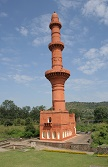 11th century A.D. under king Bhillama V, until A.D. 1296 when Ala-ud-din Khilji defeated Ramachandradeva, son of Krishna and held sway over it by forcibly reducing Ramachandradeva as his vassal. Later, Malik Kafur led his armies in A.D. 1306-07 and 1312 against the recalcitrant Ramachandradeva and his son Shankardeva successively, subdued them and killed the latter. Malik Kafur placed Harpaladeva on the throne who later declared his independence. Qutb-ud-din Mubarak Shah Khilji made a successful campaign against Deogiri and annexed the same to the Delhi Sultanate. Muhammad-bin-Tughluq, who succeeded the Khiljis at Delhi renamed Deogiri as Daulatabad (“Abode of Wealth”) and got the capital shifted from Delhi to Daulatabad in A.D. 1328. But for various reasons he re-transferred his capital back to Delhi. By quick succession of political events, the area was wrestled from the Imperial authority and the Bahmani rulers under Hasan Gangu extended his control over Daulatabad as well. By 1499 the Nizam Shahis of Ahmednagar not only captured but also made Daulatabad as their capital in A.D. 1607. The subsequent period witnessed a series of wars between the Deccan Sultans and the Mughals under Akbar and Shah Jahan. In 1633 A.D. Daulatabad was finally captured after a prolonged siege of four months. It was during this time Aurangzeb was placed as viceroy of Deccan who led his campaigns against Bijapur and Golconda from Daulatabad. For a short period Daulatabad was under the control of the Marathas before the Nizams of Hyderabad took control of it in 1724 A.D.
11th century A.D. under king Bhillama V, until A.D. 1296 when Ala-ud-din Khilji defeated Ramachandradeva, son of Krishna and held sway over it by forcibly reducing Ramachandradeva as his vassal. Later, Malik Kafur led his armies in A.D. 1306-07 and 1312 against the recalcitrant Ramachandradeva and his son Shankardeva successively, subdued them and killed the latter. Malik Kafur placed Harpaladeva on the throne who later declared his independence. Qutb-ud-din Mubarak Shah Khilji made a successful campaign against Deogiri and annexed the same to the Delhi Sultanate. Muhammad-bin-Tughluq, who succeeded the Khiljis at Delhi renamed Deogiri as Daulatabad (“Abode of Wealth”) and got the capital shifted from Delhi to Daulatabad in A.D. 1328. But for various reasons he re-transferred his capital back to Delhi. By quick succession of political events, the area was wrestled from the Imperial authority and the Bahmani rulers under Hasan Gangu extended his control over Daulatabad as well. By 1499 the Nizam Shahis of Ahmednagar not only captured but also made Daulatabad as their capital in A.D. 1607. The subsequent period witnessed a series of wars between the Deccan Sultans and the Mughals under Akbar and Shah Jahan. In 1633 A.D. Daulatabad was finally captured after a prolonged siege of four months. It was during this time Aurangzeb was placed as viceroy of Deccan who led his campaigns against Bijapur and Golconda from Daulatabad. For a short period Daulatabad was under the control of the Marathas before the Nizams of Hyderabad took control of it in 1724 A.D.
Elephanta Caves
The 'City of Caves', on an island in the Sea of Oman close to Bombay,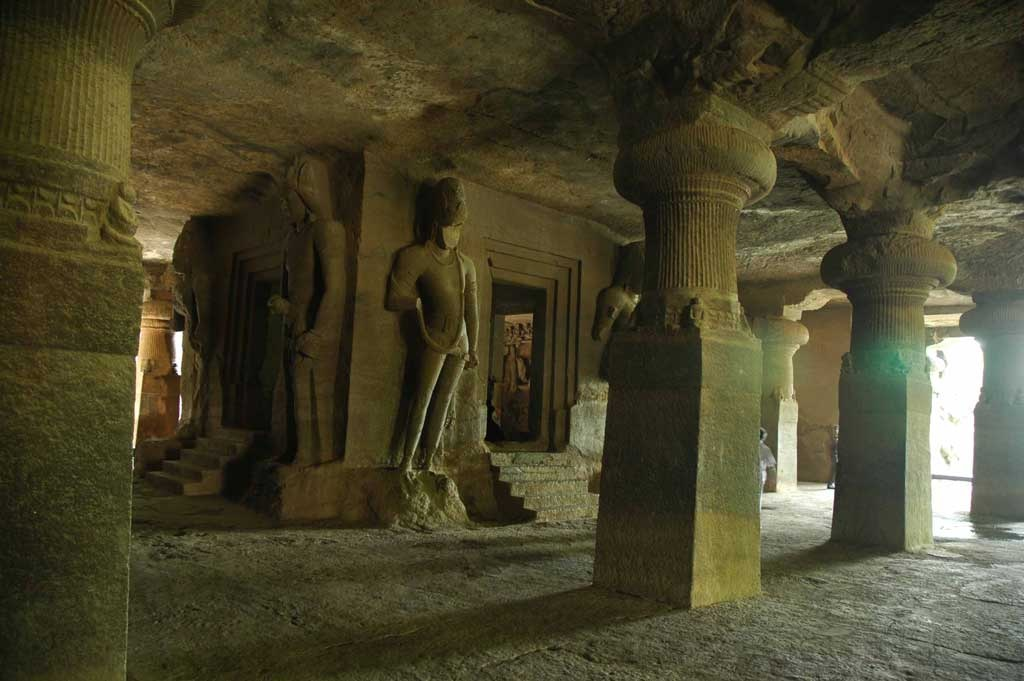 contains a collection of rock art linked to the cult of Shiva. Here, Indian art has found one of its most perfect expressions, particularly the huge high reliefs in the main cave.
contains a collection of rock art linked to the cult of Shiva. Here, Indian art has found one of its most perfect expressions, particularly the huge high reliefs in the main cave.
Ellora Caves
The name Ellora itself inspires everyone as it represents one of the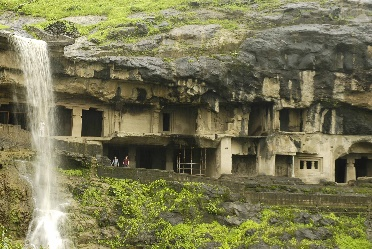 largest rock-hewn monastic-temple complexes in the entire world. Ellora is also world famous for the largest single monolithic excavation in the world, the great Kailasa (Cave 16). Ellora, three different religious creeds, viz., Buddhism, Brahmanism and Jainism.
largest rock-hewn monastic-temple complexes in the entire world. Ellora is also world famous for the largest single monolithic excavation in the world, the great Kailasa (Cave 16). Ellora, three different religious creeds, viz., Buddhism, Brahmanism and Jainism.
The caves are datable from circa 6th - 7th century A.D. to 11th - 12th century A.D. In total, there are nearly 100 caves in the hill range out of which 34 caves are famous and visited by many tourists, out of which Caves 1 to 12 are Buddhist; Caves 13 to 29 are Brahmanical and Caves 30 to 34 are Jaina.
Fifteen Temples at Lonar>
Fifteen temples are Named as 1. Papahareshwartemple 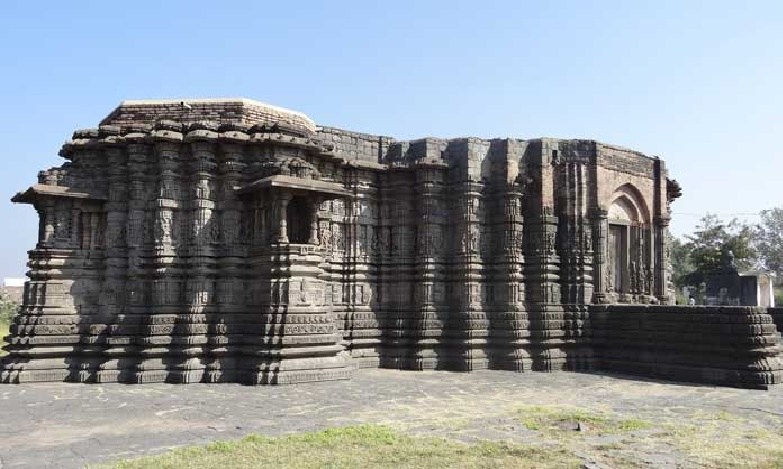 2. Kumareshwar temple 3. Yajaneshwartemple, 4. Ramgaya temple, 5. Mahadev temple, 6. Bagichatemple, 7. Waghtemple, 8. MorTemple 9. Kamalja Devi temple, 10. Mahadev temple near Kamaljadevi temple, 11. Amberkhana temple 12. MunglaMahadevtemple 13. Deshmukhtemple, 14 ChopdaMahadevtemples, 15. Peer kiChattri. These temples were built around the crater lake around 11th - 12thcentury AD. These temples follow the contemporary regional styles, quite homogenously termed as Hemadpanti. The temples are dedicated mainly to Lord Ṥiva, though there are few to other deities too. Kamalja Devi temple is one amongst these, dedicated to Ṥakti, Goddess Kamalja, where yearly annual fairs are organised during the festival of Navaratra.
2. Kumareshwar temple 3. Yajaneshwartemple, 4. Ramgaya temple, 5. Mahadev temple, 6. Bagichatemple, 7. Waghtemple, 8. MorTemple 9. Kamalja Devi temple, 10. Mahadev temple near Kamaljadevi temple, 11. Amberkhana temple 12. MunglaMahadevtemple 13. Deshmukhtemple, 14 ChopdaMahadevtemples, 15. Peer kiChattri. These temples were built around the crater lake around 11th - 12thcentury AD. These temples follow the contemporary regional styles, quite homogenously termed as Hemadpanti. The temples are dedicated mainly to Lord Ṥiva, though there are few to other deities too. Kamalja Devi temple is one amongst these, dedicated to Ṥakti, Goddess Kamalja, where yearly annual fairs are organised during the festival of Navaratra.
Gawligarh Fort
Gawilgarh Fort, Amravati :- According to the local tradition the fort was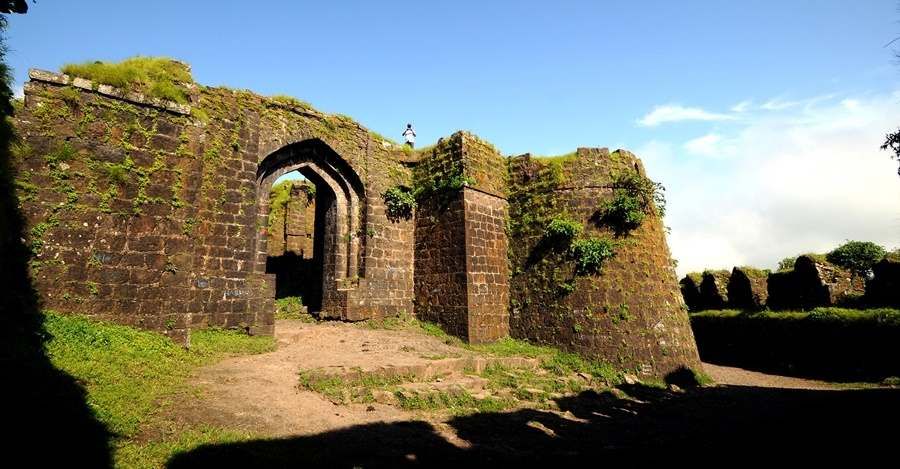 constructed in 12th Century by Gawali King who belongs to the family of Yadavas. , because of king Gawali it was called as Gawilgad. It was mud construction According to the Vol No 1 of Tarikhe-E- Farishta , written by Farishta the fort was constructed by the 9th King of Bahamani Sultan Ahmad Shah Vali in 1425 AD. In 1477 AD , 1st King Phatteulla Imadulmulk of Imadshahi of Berar repair and extent its peripheri.In 1577 AD, during the reign of Nizamshahi under Saiyyad Murtuza Sabzavari 's inspection Bahiramkhan repair the fort.
constructed in 12th Century by Gawali King who belongs to the family of Yadavas. , because of king Gawali it was called as Gawilgad. It was mud construction According to the Vol No 1 of Tarikhe-E- Farishta , written by Farishta the fort was constructed by the 9th King of Bahamani Sultan Ahmad Shah Vali in 1425 AD. In 1477 AD , 1st King Phatteulla Imadulmulk of Imadshahi of Berar repair and extent its peripheri.In 1577 AD, during the reign of Nizamshahi under Saiyyad Murtuza Sabzavari 's inspection Bahiramkhan repair the fort.
Pandav Lena Caves (Pathardi)
The group of twenty-four caves, locally known as Pandav Lena or Pandava’s Caves is hewn on a vertical face of the hill at a height of nearly 60-70 m from the surrounding plains. Being located on a major ancient trade route connecting the costal port towns like Kalyana, Sopara with inland cities, they received extensive patronage from the ruling families as well as the trading community. The hill on which the caves are hewn was known as Trirashmi as revealed from an inscription in Cave 10. These caves are datable from first century B.C., to the sixth or seventh century A.D. Some of the earlier caves were altered, reconditioned and embellished with the figures of Lord Buddha and Bodhisattvas, and a few new ones were added during second half of occupation. The Satavahanas and Kshaharatas patronised the establishment extensively. They excavated two largest monasteries (Cave 3 and 8) while the common people aided the remaining caves. There are also many water tanks and cisterns in conjunction with the caves. Most of the caves were excavated when Hinayanism was in vogue, the first great division of Buddhist faith. The caves of this phase were originally devoid of images or any representation of Buddha as an object of worship. The interior of these caves is stark plain, in contrast to the heavily ornamented exterior.
Pandava’s Caves is hewn on a vertical face of the hill at a height of nearly 60-70 m from the surrounding plains. Being located on a major ancient trade route connecting the costal port towns like Kalyana, Sopara with inland cities, they received extensive patronage from the ruling families as well as the trading community. The hill on which the caves are hewn was known as Trirashmi as revealed from an inscription in Cave 10. These caves are datable from first century B.C., to the sixth or seventh century A.D. Some of the earlier caves were altered, reconditioned and embellished with the figures of Lord Buddha and Bodhisattvas, and a few new ones were added during second half of occupation. The Satavahanas and Kshaharatas patronised the establishment extensively. They excavated two largest monasteries (Cave 3 and 8) while the common people aided the remaining caves. There are also many water tanks and cisterns in conjunction with the caves. Most of the caves were excavated when Hinayanism was in vogue, the first great division of Buddhist faith. The caves of this phase were originally devoid of images or any representation of Buddha as an object of worship. The interior of these caves is stark plain, in contrast to the heavily ornamented exterior.
Tomb of Rabia Daurani (Bibi-ka-Maqbara)
The Bibi-Ka-Maqbara is a beautiful mausoleum of Rabia-ul-Daurani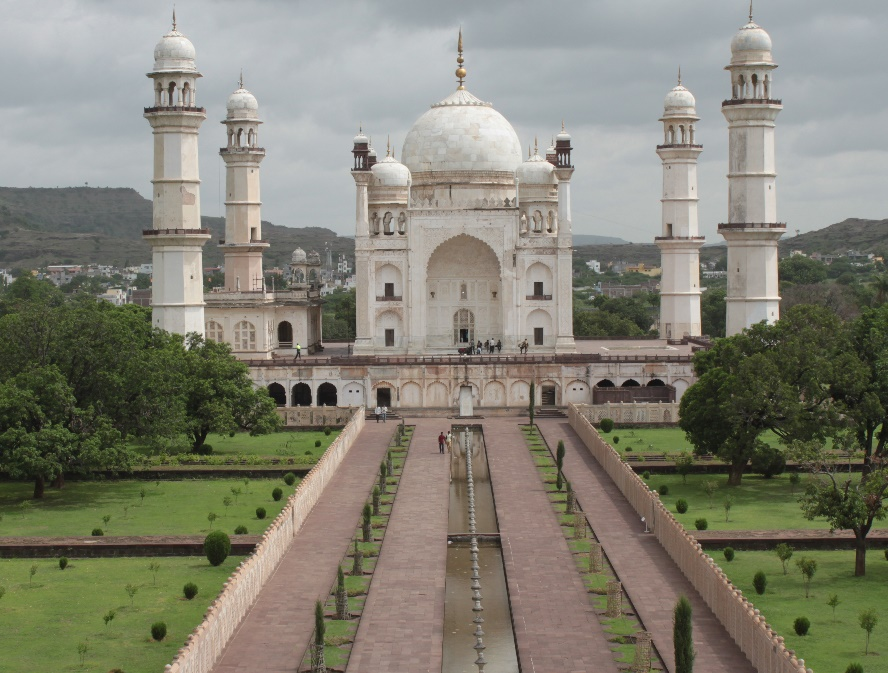 alias Dilras Banu Begum, the wife of the Mughal Emperor Aurangazeb (1658-1707 AD.). This mausoleum is believed to be constructed by Prince Azam Shah in memory of his mother between 1651 and 1661 AD. An inscription found on the main entrance door mentions that this mausoleum was designed and erected by Ata-ullah, an architect and Hanspat Rai, an engineer. The mausoleum draws its inspiration from the world famous Taj Mahal of Agra (constructed between 1631 to 1648 AD.) and hence it is rightfully known as the "Taj of Deccan".
alias Dilras Banu Begum, the wife of the Mughal Emperor Aurangazeb (1658-1707 AD.). This mausoleum is believed to be constructed by Prince Azam Shah in memory of his mother between 1651 and 1661 AD. An inscription found on the main entrance door mentions that this mausoleum was designed and erected by Ata-ullah, an architect and Hanspat Rai, an engineer. The mausoleum draws its inspiration from the world famous Taj Mahal of Agra (constructed between 1631 to 1648 AD.) and hence it is rightfully known as the "Taj of Deccan".
Source: Must See Indian Heritage
Last Modified : 7/1/2020
